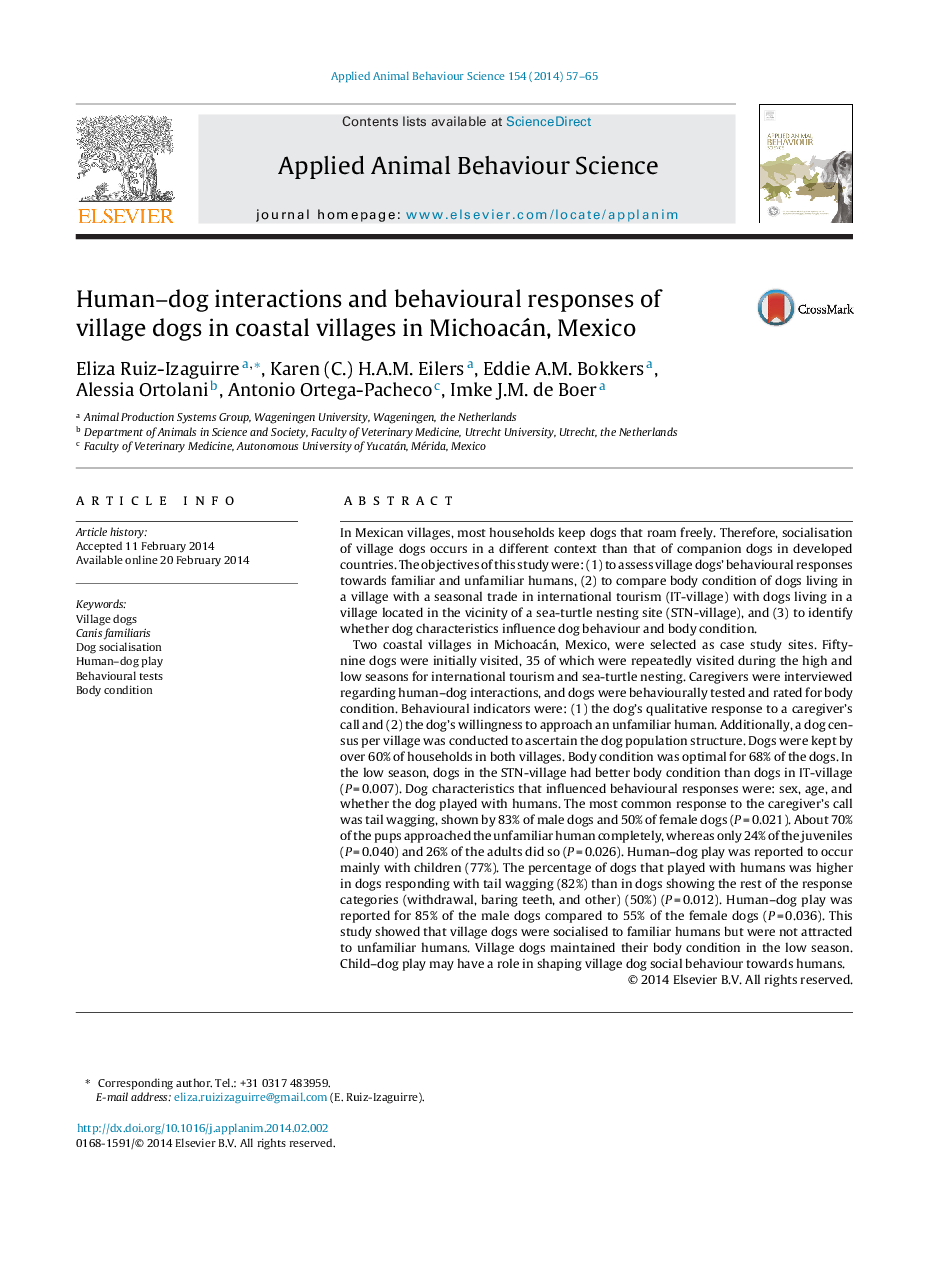| کد مقاله | کد نشریه | سال انتشار | مقاله انگلیسی | نسخه تمام متن |
|---|---|---|---|---|
| 6379695 | 1625352 | 2014 | 9 صفحه PDF | دانلود رایگان |

In Mexican villages, most households keep dogs that roam freely. Therefore, socialisation of village dogs occurs in a different context than that of companion dogs in developed countries. The objectives of this study were: (1) to assess village dogs' behavioural responses towards familiar and unfamiliar humans, (2) to compare body condition of dogs living in a village with a seasonal trade in international tourism (IT-village) with dogs living in a village located in the vicinity of a sea-turtle nesting site (STN-village), and (3) to identify whether dog characteristics influence dog behaviour and body condition.Two coastal villages in Michoacán, Mexico, were selected as case study sites. Fifty-nine dogs were initially visited, 35 of which were repeatedly visited during the high and low seasons for international tourism and sea-turtle nesting. Caregivers were interviewed regarding human-dog interactions, and dogs were behaviourally tested and rated for body condition. Behavioural indicators were: (1) the dog's qualitative response to a caregiver's call and (2) the dog's willingness to approach an unfamiliar human. Additionally, a dog census per village was conducted to ascertain the dog population structure. Dogs were kept by over 60% of households in both villages. Body condition was optimal for 68% of the dogs. In the low season, dogs in the STN-village had better body condition than dogs in IT-village (PÂ =Â 0.007). Dog characteristics that influenced behavioural responses were: sex, age, and whether the dog played with humans. The most common response to the caregiver's call was tail wagging, shown by 83% of male dogs and 50% of female dogs (PÂ =Â 0.021). About 70% of the pups approached the unfamiliar human completely, whereas only 24% of the juveniles (PÂ =Â 0.040) and 26% of the adults did so (PÂ =Â 0.026). Human-dog play was reported to occur mainly with children (77%). The percentage of dogs that played with humans was higher in dogs responding with tail wagging (82%) than in dogs showing the rest of the response categories (withdrawal, baring teeth, and other) (50%) (PÂ =Â 0.012). Human-dog play was reported for 85% of the male dogs compared to 55% of the female dogs (PÂ =Â 0.036). This study showed that village dogs were socialised to familiar humans but were not attracted to unfamiliar humans. Village dogs maintained their body condition in the low season. Child-dog play may have a role in shaping village dog social behaviour towards humans.
Journal: Applied Animal Behaviour Science - Volume 154, May 2014, Pages 57-65